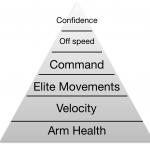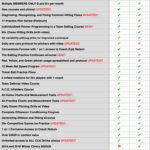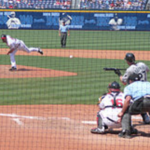When to hit and run, and when not to hit and run
The hit and run fell out of favor with me for a long time, but it is back in vogue (in my mind anyway) in the right situation.
When NOT to hit and run
- When a pitcher is really slow to the plate
- When you have a well above average basestealer
- When the pitcher doesn't throw many strikes
- When the pitcher throws a lot of breaking balls
- When the catcher isn't very good
- When your hitters have no trouble hitting the pitcher
When you should consider hit and run
- When the pitcher is quick to the plate
- When you have an average to below average base stealer
- When the pitcher is all over the strike zone
- When the pitcher throws a lot of fastballs (or when you think a fastball is coming)
- When the catcher is above average at throwing
- When you are overmatched (especially by fastballs) at the plate
Check out how Cornerstone Elite can help your team score more runs this season...
- Small Ball for Big Innings - This course shows a mindset shift to using the small game to score loads of runs, not just one.
- Weighted QAB% - Quality at bats are great… this is better. No longer will a home run and sacrifice bunt count the same for your quality at bats.
- Explosive medball series - These exercises specifically translate onto the field by mimicking what happens when you swing a bat or throw a ball.
- 12 week bat speed improvement plan - This over and under load bat speed plan increases bat speed and creates situations your players need to adapt to.
- Chaos hitting drills - These drills wreak havoc on your hitters, just like opposing pitchers will try to do!
- My favorite tee drill - See how I’ve changed one of our most popular tee drills to still require players to make a decision while having a much more aggressive mind set.
- Week long batting practice plan for decision making - This plan is complete with tee work, short toss work, live arm BP and bunting segments.
 Posted by Kyle Nelson
Posted by Kyle Nelson- Posted in Uncategorized
 Mar, 31, 2018
Mar, 31, 2018 No Comments.
No Comments.
Elite members login here
Check out what’s New/Hot!
Join our FREE Facebook Group
Recognizing, Diagnosing, and Fixing Common Hitting Flaws eCourse The 3 metrics we tested on Blast motion sensors this year Sneak Peek Inside an Elite Q and A The batting practice continuum Elite Member’s area table of contents 50+ “Chaos” hitting drills
5 sample Chaos hitting drills FREE
Mental Skills and Culture Building The hitting pyramid Welcome Elite Member, Trey! Ideas for a pitcher first practice 12 week bat speed improvement plan Make plans this offseason to have your team playing their best baseball at the end of the year” Top 5 hitting drills to translate practice skill to game performanceHow we used Blast Motion sensors with a team in 2019
What to do if your hitters are overmatched Welcome Elite Member, Tommy! Setting your baserunners up for success Welcome Elite Member, Mike! A consulting call with Elite Member Matt FREE Web Clinic: Developing Athletic, Consistent, Extraordinary Infielders
 Coach Kyle Nelson
Coach Kyle Nelson




